Prostate Cancer Staging
Staging prostate cancer is different from the way other cancer types are staged. When prostate cancer spreads, it’s often found in nearby lymph nodes. If cancer has reached these nodes, it may also have spread to other lymph nodes, bones, or other organs.
When cancer spreads from its original place to another part of the body, the new tumor has the same kind of abnormal cells and the same name as the primary tumor. For example, if prostate cancer spreads to bones, the cancer cells in the bones are actually prostate cancer cells. The disease is metastatic prostate cancer, not bone cancer. For that reason, it’s treated as prostate cancer, not bone cancer. Doctors call the new tumor “distant” or metastatic disease.
The prostate cancer staging process considers the size of the tumor, lymph node involvement, and if cancer has spread to other body parts. Two other factors are also used to determine prostate cancer stage: grade grouping and PSA levels.
Grade Grouping
Prostate cancer has five grades. Stage 1 is considered to be low grade and slower growing, while Stage 5 is high grade and growing rapidly. The grade is related to the Gleason Score, which is determined during a biopsy.
- Grade 1: Gleason score of 6 or less
- Grade 2: Gleason score of 3+4=7
- Grade 3: Gleason score of 4+3=7
- Grade 4: Gleason score of 8
- Grade 5: Gleason score of 9 or 10
PSA Levels
At prostate cancer stages 1 through 3, the oncologist considers if the result of the PSA test was above 10 but below 20 (medium) or above 20 (high). With prostate cancer stage 4, the PSA level doesn't impact the treatment options that will be recommended as much because cancer has moved outside of the prostate.
Stages of Prostate Cancer
Stage I Prostate Cancer
Stage I cancer can’t be felt during a digital rectal exam, and it can’t be seen on a sonogram. It’s found by chance when surgery is done for another reason, usually for Benign Prostatic Hyperplasia (BPH). The cancer is limited to the prostate. The grade is G1, or the Gleason score is no higher than 4.
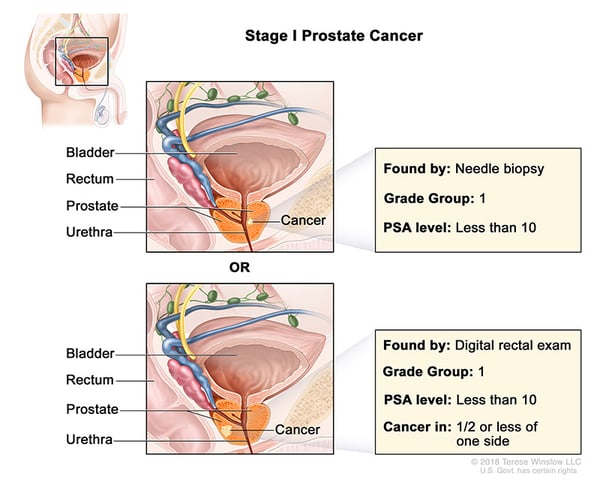
Stage II Prostate Cancer
The tumor is more advanced or a higher grade than Stage I, but the tumor doesn’t extend beyond the prostate. It may be felt during a digital rectal exam, or it may be seen on a sonogram.
Stage IIA Prostate Cancer
The tumor involves half of one side of the prostate or less and can't be felt. Cancer cells are well differentiated, and PSA levels are at least 10 but less than 20. This stage also includes larger tumors found only in the prostate, as long as the cancer cells are still well differentiated.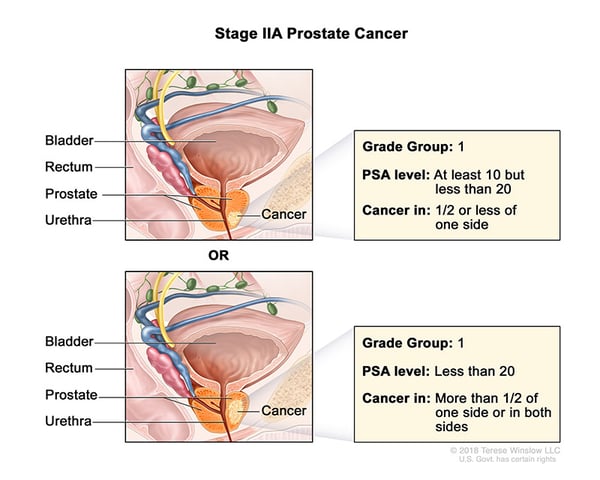
Stage IIB Prostate Cancer
The tumor may be big enough to be felt during a digital rectal exam. The PSA level is less than 20, and cancer cells are moderately differentiated.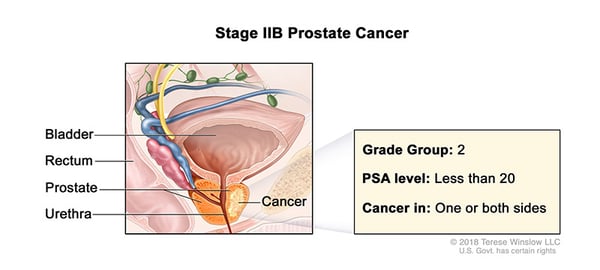
Stage IIC Prostate Cancer
The tumor may be large enough to be felt during DRE. The PSA level is less than 20, and cancer cells may be moderately or poorly differentiated.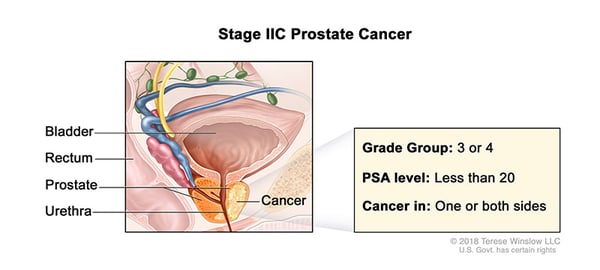
Stage III Prostate Cancer
The tumor extends beyond the prostate. The tumor may have invaded the seminal vesicles, but cancer cells haven’t spread to the lymph nodes.
Stage IIIA Prostate Cancer
Cancer has spread outside the outer layer of the prostate into the tissue nearby. It may also have spread to the seminal vesicles, and the PSA level is high.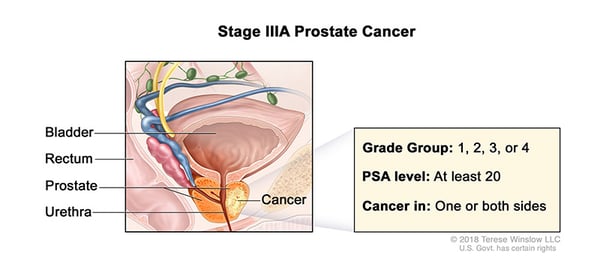
Stage IIIB Prostate Cancer
The tumor has developed outside of the prostate gland and may have invaded other structures, like the bladder or rectum.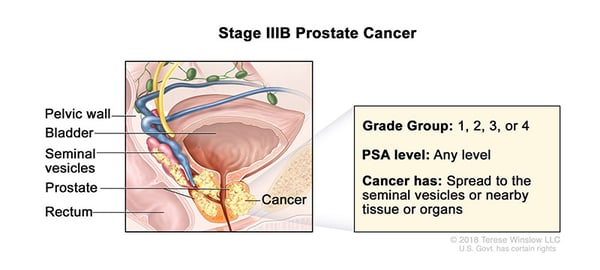
Stage IIIC Prostate Cancer
The cancer cells across the tumor are poorly differentiated, which mean they look very different from healthy cells.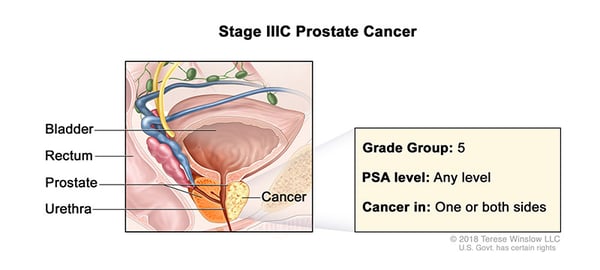
Stage IV Prostate Cancer
The tumor may have invaded the bladder, rectum, or nearby structures (beyond the seminal vesicles). It may have spread to the lymph nodes, bones, or to other parts of the body.
Stage IVA Prostate Cancer
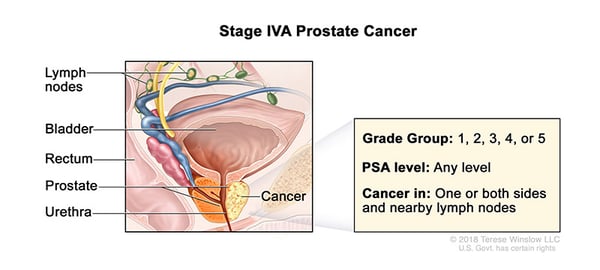
Stage IVB Prostate Cancer
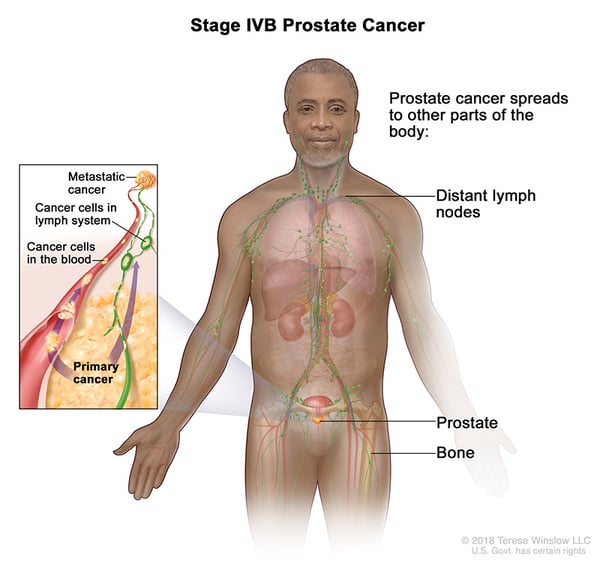
Learn more about how prostate cancer is treated based on its grade and stage.
Prostate Cancer Doctors at Willamette Valley Cancer Institute
If you or a loved one has received a new prostate cancer diagnosis, our medical oncologists and radiation oncologists are here to guide you. Our prostate cancer doctors work with each patient to understand their specific diagnosis and recommend a personalized treatment plan based on you. We offer a patient-centered approach to cancer care and have access to the latest prostate cancer treatments at our cancer centers throughout Willamette Valley, including Eugene.

